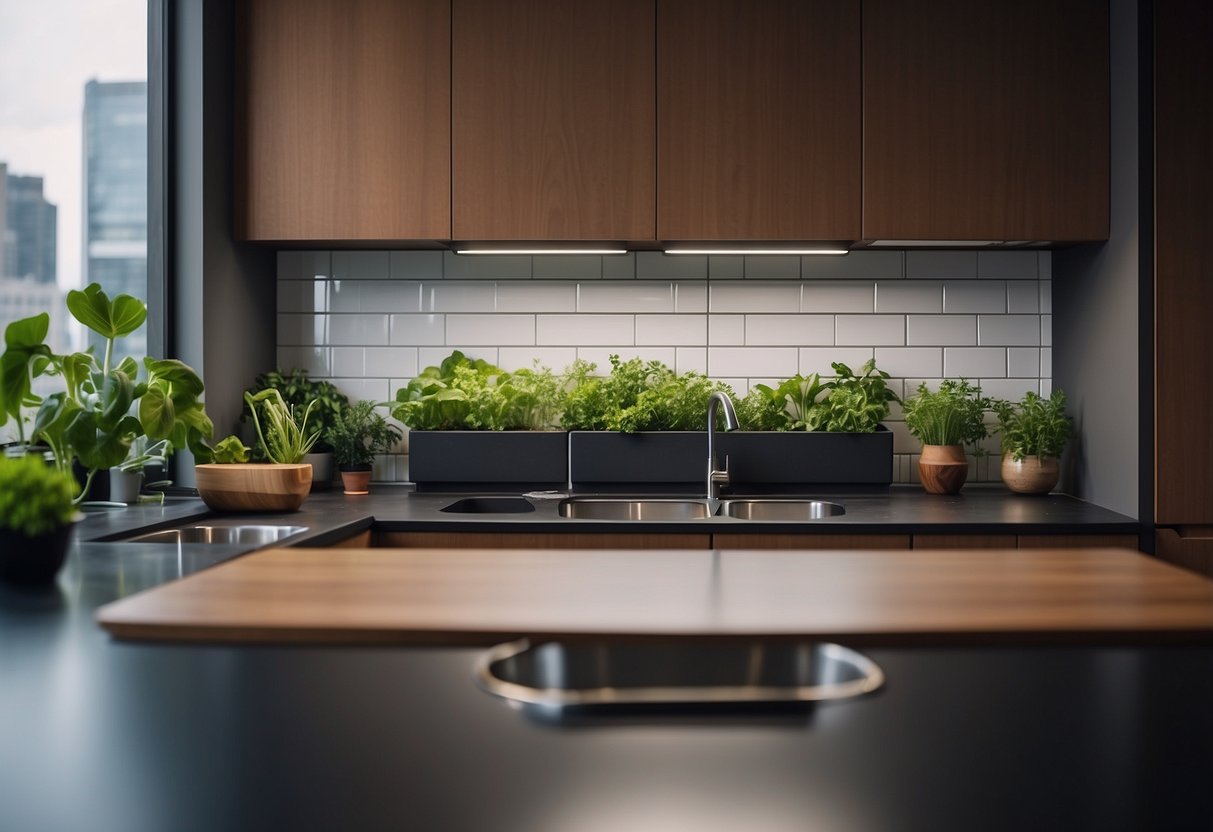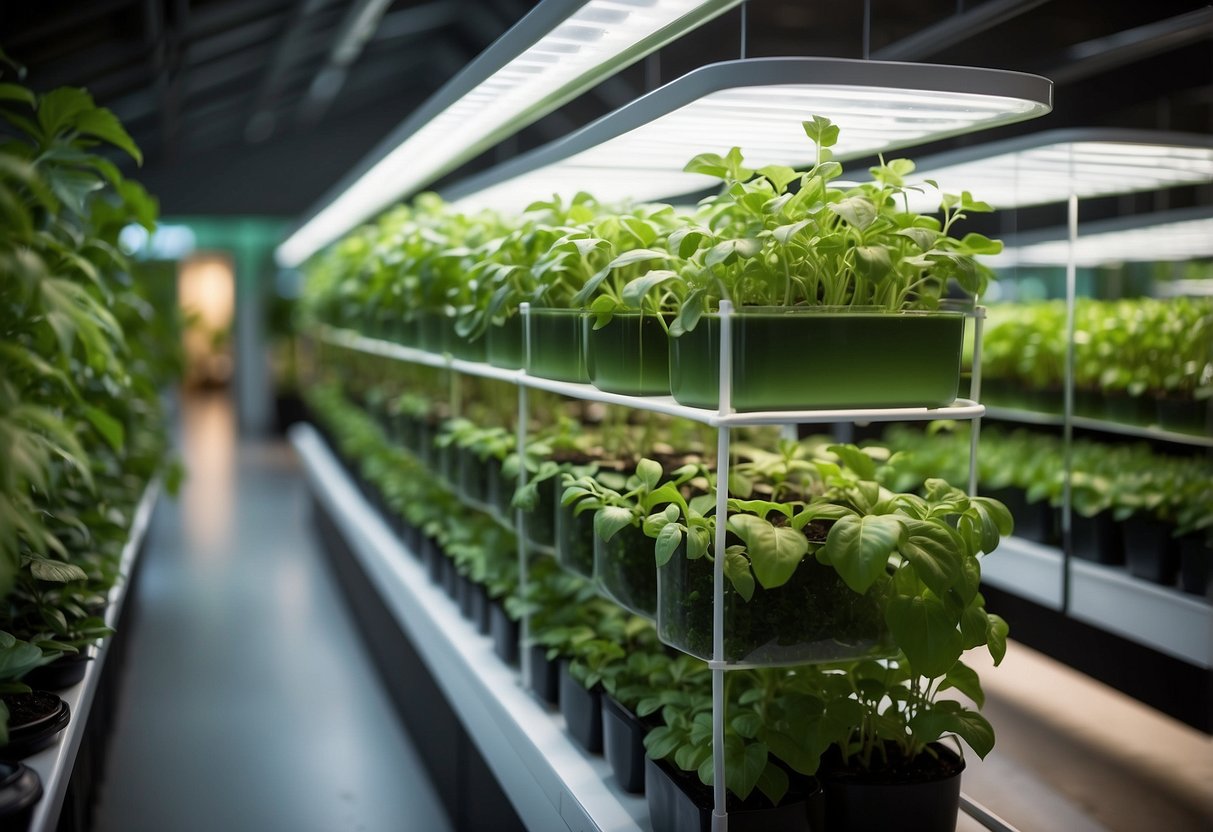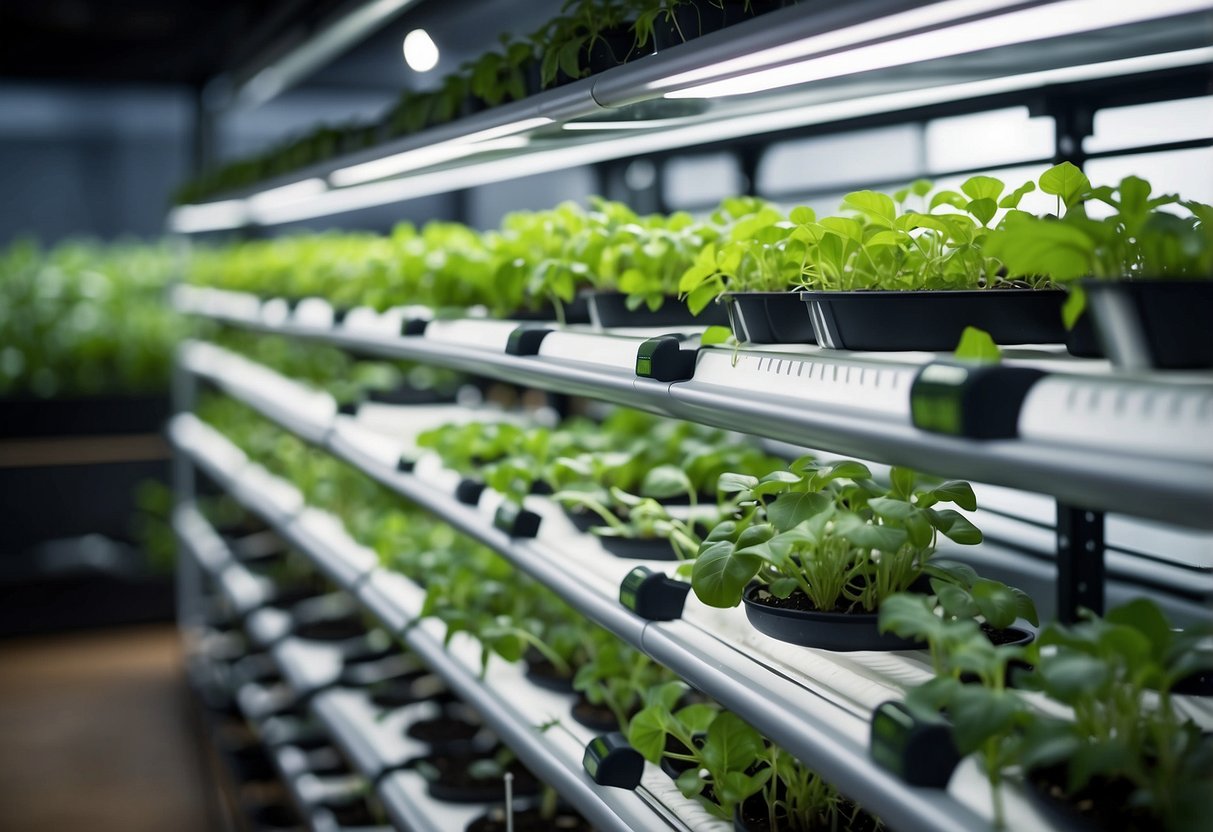Vertical Hydroponic Garden Ideas: Easy and Creative Solutions
Looking to grow your own food but short on space? Vertical hydroponic gardens could be the perfect solution. These setups allow you to cultivate a variety of plants, all without traditional soil. By using hydroponics in a vertical arrangement, you can maximize the growing potential of even the smallest spaces.

Ever wondered how you can grow fresh herbs and vegetables indoors year-round? Vertical hydroponic gardens make it not only possible but also easy. Whether you’re in an apartment or have limited outdoor space, these gardens bring the joy of gardening right into your home. Dive in and discover how you can start your own vertical hydroponic garden today.
1) The Garden Tower

The Garden Tower is a space-saving solution that allows you to grow multiple plants vertically. It is perfect for small spaces like apartments or balconies.
At about 5 and a half feet tall, the Vertefarm Vertical Hydroponic Indoor Garden offers a sleek design. This tower gives you the chance to grow greens year-round.
You can easily build your own garden tower using PVC pipes. Check out how to create a DIY hydroponic garden tower with simple materials.
2) ZipGrow Towers

ZipGrow Towers are easy to use and perfect for high-density hydroponic farming.
These towers are designed to make the best use of light and space. You can stack them closely, allowing you to grow more plants in a small area.
ZipGrow Towers work well in both hydroponic and aquaponic systems, making them versatile for various types of gardens.
For more details, check out the ZipGrow Towers page.
3) Tower Garden FLEX

The Tower Garden FLEX is a great option if you want to grow plants vertically. It is designed to help you get the most out of your space.
This system is easy to use. You start by planting seeds and then transfer them to the tower.
Regularly adding water and nutrients to the reservoir keeps your plants healthy. For more detailed steps, check out the Tower Garden FLEX growing guide.
4) Mr. Stacky 5-Tier Planter

The Mr. Stacky 5-Tier Planter is a great choice for small spaces. It stands 1 meter tall and has 20 plant sites, which makes it perfect for growing various vegetables, herbs, and even large fruiting plants.
You can use your own soil or go for hydroponic options. The planter is suitable for patios, kitchens, greenhouses, and even classrooms. Learn more about this versatile gardening tool at Mr. Stacky.
5) Aerospring 27-Plant Vertical Garden

The Aerospring 27-Plant Vertical Garden is perfect for small spaces. You can grow up to 27 plants at once. This system is designed to be efficient and easy to use.
It works well for various plants such as lettuce, herbs, and tomatoes. The vertical design saves space while offering high yields.
If you’re interested, you can check out more details on the Aerospring 27-Plant Vertical Hydroponics Indoor Growing System. It’s a great option for home gardeners.
6) GreenStalk Vertical Planter

The GreenStalk Vertical Planter is great for small spaces like apartments or balconies. It’s a tiered system where you can grow a variety of plants. You have the option to use it with either seeds or starter plants.
The planter comes in different sizes. The original design has five tiers and each tier has six planting pockets. This allows you to grow a total of 30 plants. If you need more space, you can add additional shelves.
This planter is perfect for growing veggies, flowers, or herbs. It’s designed to make gardening simple and accessible for everyone. Check out the GreenStalk Vertical Planter to learn more.
7) Click and Grow Smart Garden

The Click and Grow Smart Garden is an easy-to-use indoor gardening system.
You can grow fresh herbs and vegetables with minimal effort.
This system uses smart soil and built-in LED lights for optimal growth.
Its sleek design fits well in any home.
Ideal for beginners, just plug it in and watch your plants thrive.
Learn more about it here.
8) VegeBox Hydroponics Growing System

The VegeBox Hydroponics Growing System is a compact and efficient indoor garden solution. It comes with 12 pods to grow a variety of herbs and greens.
You can easily set this up on a tabletop or counter. The nutrient-rich water circulates, helping your plants grow faster.
It’s perfect if you have limited space and want fresh produce year-round. Check out the VegeBox review for more details.
9) Urban Leaf Herb Kits

Urban Leaf Herb Kits are a fun way to start a vertical hydroponic garden right in your home.
These kits are perfect for beginners and come with everything you need to grow fresh herbs.
You can place them on your kitchen counter or by a sunny window for easy access to fresh herbs year-round.
10) Rise Gardens Single Family Garden

You’ll love the Rise Gardens Single Family Garden if you want to grow your own food indoors. It’s a modular, hydroponic system that saves space and water.
This garden can fit up to 36 plants. The design blends well with any home decor.
Rise Gardens’ companion app helps you monitor and manage your plants easily. It’s great for beginners and experts alike. Learn more about it here.
Benefits Of Vertical Hydroponic Gardens

Vertical hydroponic gardens offer multiple benefits that make them an excellent choice for home and urban gardening. Key advantages include saving space, efficient water use, and increased crop yields.
Space-Saving Advantages
One of the primary benefits of vertical hydroponic gardens is their ability to save space. By growing plants vertically, you use much less floor space. This is perfect for those living in apartments or homes with small yards.
Vertical structures can be placed on balconies, patios, or even indoors. This method allows you to grow a wide variety of plants without requiring a large plot of land. Maximizing space means you can have lush, green gardens even in limited areas.
Water Efficiency
Vertical hydroponic gardens are known for their water efficiency. Traditional gardening methods often waste water due to runoff and evaporation. In hydroponic systems, water is recirculated and reused, minimizing waste.
This system uses a nutrient solution that ensures plants get the exact amount of water they need. This precise delivery eliminates overwatering and reduces water usage. This makes vertical hydroponic gardens an excellent option for areas with water restrictions or for gardeners looking to conserve water.
Higher Crop Yields
Another significant benefit is the potential for higher crop yields. Hydroponic systems provide a controlled environment that optimizes plant growth. Plants receive the perfect balance of nutrients, light, and water, which leads to faster and healthier growth.
Vertical setups also allow you to grow more plants in a smaller area. This means you can harvest more produce compared to traditional gardening methods. The ability to layer plants also maximizes the number of crops you can grow at once, leading to a more productive garden.
For more information on how vertical hydroponic gardens work and their benefits, you can visit The Ultimate Guide to Hydroponic Vertical Gardens for Your Home or check out Hydroponic Vertical Garden: What Is It and How Does It Work?.
Setting Up Your Vertical Hydroponic Garden

When setting up your vertical hydroponic garden, it’s crucial to think about location, the types of plants you want to grow, and how to properly install your system.
Choosing The Right Location
First, find a good spot for your vertical garden. If you’re indoors, you might need to use grow lights to simulate sunlight. Place your garden in an area where it can get at least 14 to 16 hours of light daily and 10 to 12 hours of darkness. This lighting schedule ensures that plants can undergo photosynthesis effectively.
Ensure the location has good airflow to prevent mold and pests. If you’re setting up outdoors, pick a place that gets enough sunlight and is sheltered from strong winds. Stability is key, so make sure the surface is flat and can support the weight of the garden structure.
Selecting Suitable Plants
Choose plants that thrive in hydroponic systems. Leafy greens like lettuce, spinach, and herbs such as basil and mint are great choices. These plants have shallow roots and grow quickly. Tomatoes and strawberries can also be grown, but they require more care and support due to their weight and size.
Plants with the same nutrient and light needs should be grouped together. This makes it easier to manage your garden. Be mindful of the space between plants. Crowding can lead to poor air circulation, which increases disease risk. Start small and expand your garden as you get more comfortable with the system.
Installation Basics
To set up your vertical hydroponic garden, you’ll first need to build a stable frame. You can use materials like PVC pipes or wooden boards. Drill holes in the frame for plant holders. Next, install an irrigation system to supply water and nutrients to the plants.
Set up a watering system that ensures every level of your garden gets an adequate supply. You may also need a pump to circulate water in a closed-loop system. Finally, think about drainage. Excess water should be collected and reused to minimize waste and keep your garden efficient.
Maintenance Tips

To keep your vertical hydroponic garden healthy and thriving, focus on monitoring nutrient levels, managing pests, and ensuring proper lighting. These elements are crucial for the growth and well-being of your plants.
Monitoring Nutrient Levels
Maintaining the right nutrient balance is key. Use a pH meter to test the nutrient solution, aiming for a pH range between 5.5 and 6.5. This helps plants absorb nutrients efficiently.
Check the nutrient solution weekly. Replenish it as needed to ensure your plants get essential nutrients. Keep an eye on the water level too, as it can drop due to evaporation and plant uptake.
Document your observations and adjustments in a garden journal. This helps track changes and see patterns over time. Consistent monitoring leads to healthier plants and better yield.
Pest Management
Pests can be a big problem in any garden, even a hydroponic one. To prevent infestations, regularly inspect plants for signs of bugs like aphids or mites. Remove affected leaves immediately to stop the pests from spreading.
Introduce beneficial insects, like ladybugs, to control pests naturally. Use organic insecticidal soap if needed. Be careful with chemical treatments, as they can harm your plants and the environment.
Maintain a clean garden area. This includes sanitizing tools and removing dead leaves or debris, which can attract pests. Healthy, clean environments deter pests and allow your plants to thrive.
Ensuring Proper Lighting
Lighting is another crucial factor for your garden’s success. Aim for 12 to 16 hours of light each day, mimicking natural sunlight. Use grow lights, especially if you have an indoor setup.
LED grow lights are energy-efficient and produce less heat, preventing damage to your plants. Position the lights close to the plants but not too close to avoid scorching.
Adjust the light height as plants grow. Too much light can be just as harmful as too little, so balance is essential. Proper lighting supports photosynthesis, resulting in healthy, vibrant plants.







